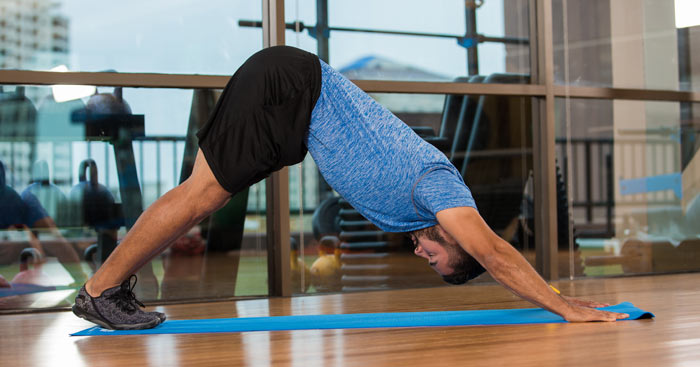In my many years as a health and fitness professional, I have found that the most overlooked and underappreciated component of a workout session is the cool-down. Clients would rather work on conditioning until the very last minute, and then “stretch on their own” after the session, which never seems to happen as they rush out the door to their next obligation. In group fitness classes, there are always a handful of participants who duck out early and skip the cool-down portion to get on with the next important task of the day. Those that continually eschew the opportunity to rest and stretch at the end of their workouts are missing one of the best times of day to do so, as the body is warm and the nervous system is primed to allow relaxation. In other words, skipping out on your cool-down means that you lose the chance to fully recover after a workout. Taking those few moments to conclude your session is like pushing the “reset” button so that you are ready to take on whatever comes next in your day.
A cool-down typically involves two components: (1) working at a reduced intensity to allow the heart rate to return toward resting and (2) stretching. The first component is simple and most of us do this instinctively as we end the workout and taper off intensity as we finish. Returning the heart rate toward resting could be as simple as walking after a jog or pedaling at a lighter resistance at the end of a bike ride. Stretching is also simple, but is perhaps overlooked because of not knowing which stretches are best or for fear of wasting time. Fortunately, just about any stretch that is held for at least 30 seconds and includes deep breathing will promote cool-down benefits. Static stretching—the kind of stretch that is held in place—is one of the best techniques for increasing flexibility. Breathing slowly and deeply is an important part of stretching, as it has been shown to improve blood oxygen saturation, lower blood pressure and reduce anxiety. Try the following short routine at the end of your next workout for a whole-body stretch that will leave you feeling relaxed and ready for whatever your day brings. Focus on breathing deeply and holding each position for three to five breaths before moving on to the next stretch.
Lying Knee-to-chest Stretch

Lie on your back and bring one knee up to your chest while keeping the other leg on the floor with the knee straight. Grasp underneath the knee of the top leg to add some passive assistance. Use the thigh muscles of the straight leg to actively press it down into the floor—that is, try to get the back of the knee to touch the floor. Switch sides and repeat. This stretch focuses on the lower back, hamstrings, quadriceps and hip flexors.
Child’s Pose With Rotation

Start on your hands and knees and then shift the hips back to rest above your heels. Make sure the right arm is straight and extended directly out from the shoulder. Slowly thread the left arm underneath the right arm, trying to allow the head and the back of the left shoulder to rest on the floor. Be sure to keep your hips back over the heels to lock your pelvis in place so that the rotation occurs mostly through the thoracic spine. Switch sides and repeat. This stretch focuses on all of the muscles that surround the torso.
Downward Facing Dog*

Start in the plank position on your hands and toes. Shift your hips back while lifting the tailbone upward. Work on keeping the spine in a neutral position (without any rounding in the back) and the elbows straight. Also, focus on spreading the fingers and placing equal amounts of weight in both hands. Feel free to pedal the feet so that one heel touches the floor at a time. It’s great if you can get both heels to the floor, but don’t make that the goal of the stretch. Instead, concentrate on lengthening through the backs of the legs and the front of the torso. This stretch focuses on the calves, hamstrings, abdominals, latissimus dorsi, pectorals and biceps.
*Note: This move features an inversion where your head is lowered below the heart. Please be sure it is safe for you to perform inverted poses prior to attempting this stretch. Common contraindications include high blood pressure, problems with dizziness (which include side effects of certain medications), sinus pressure and eye disorders.




 by
by 






 by
by